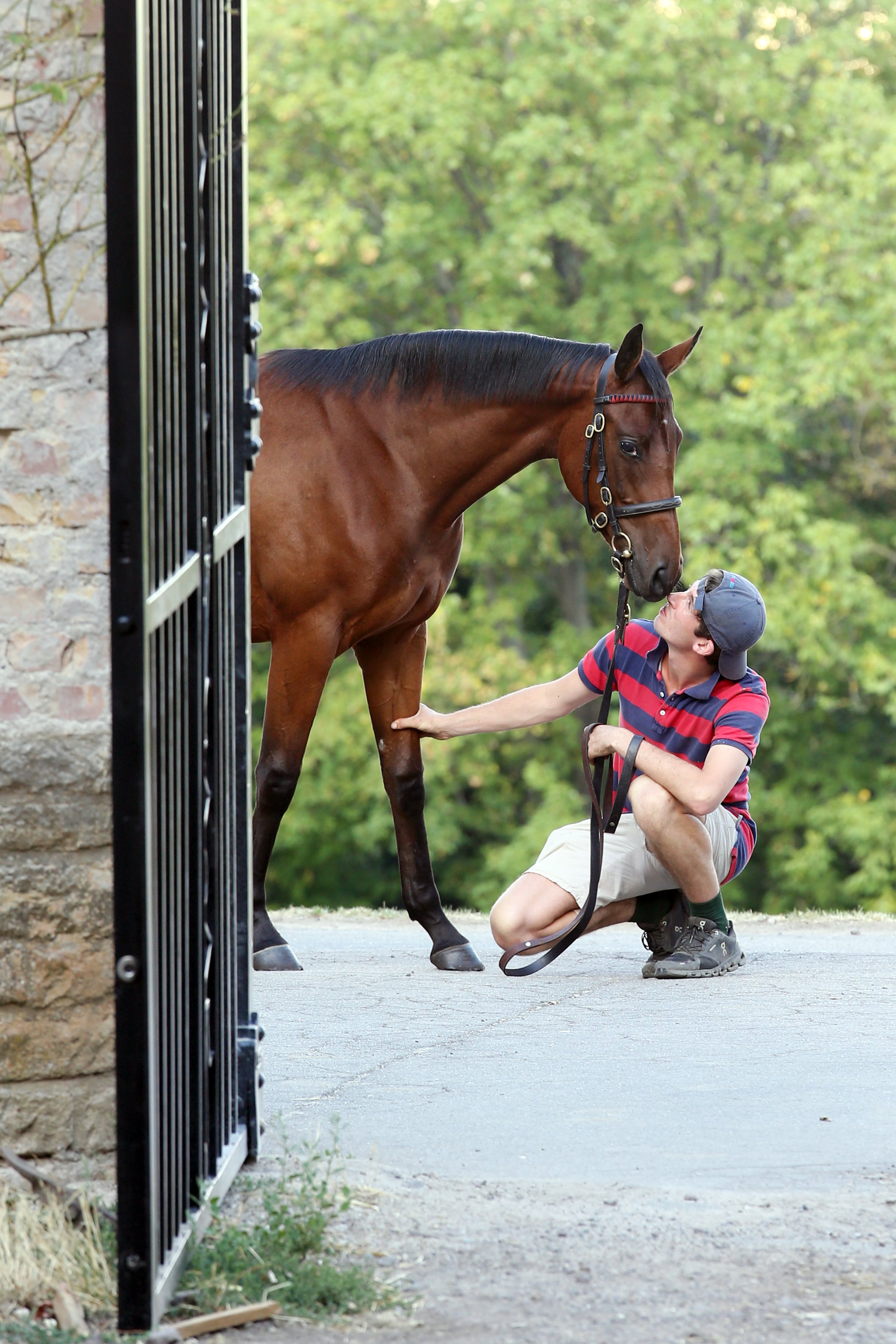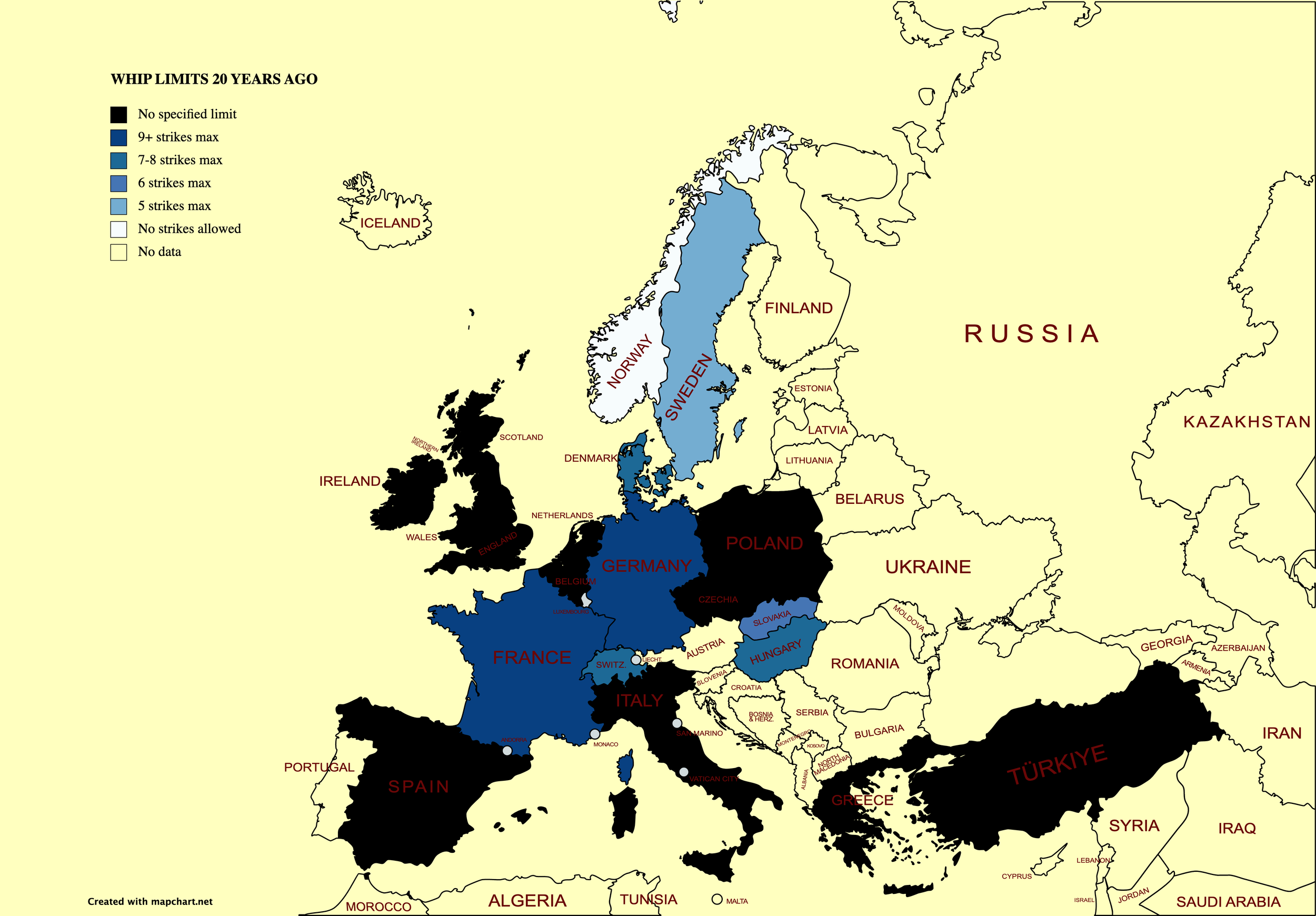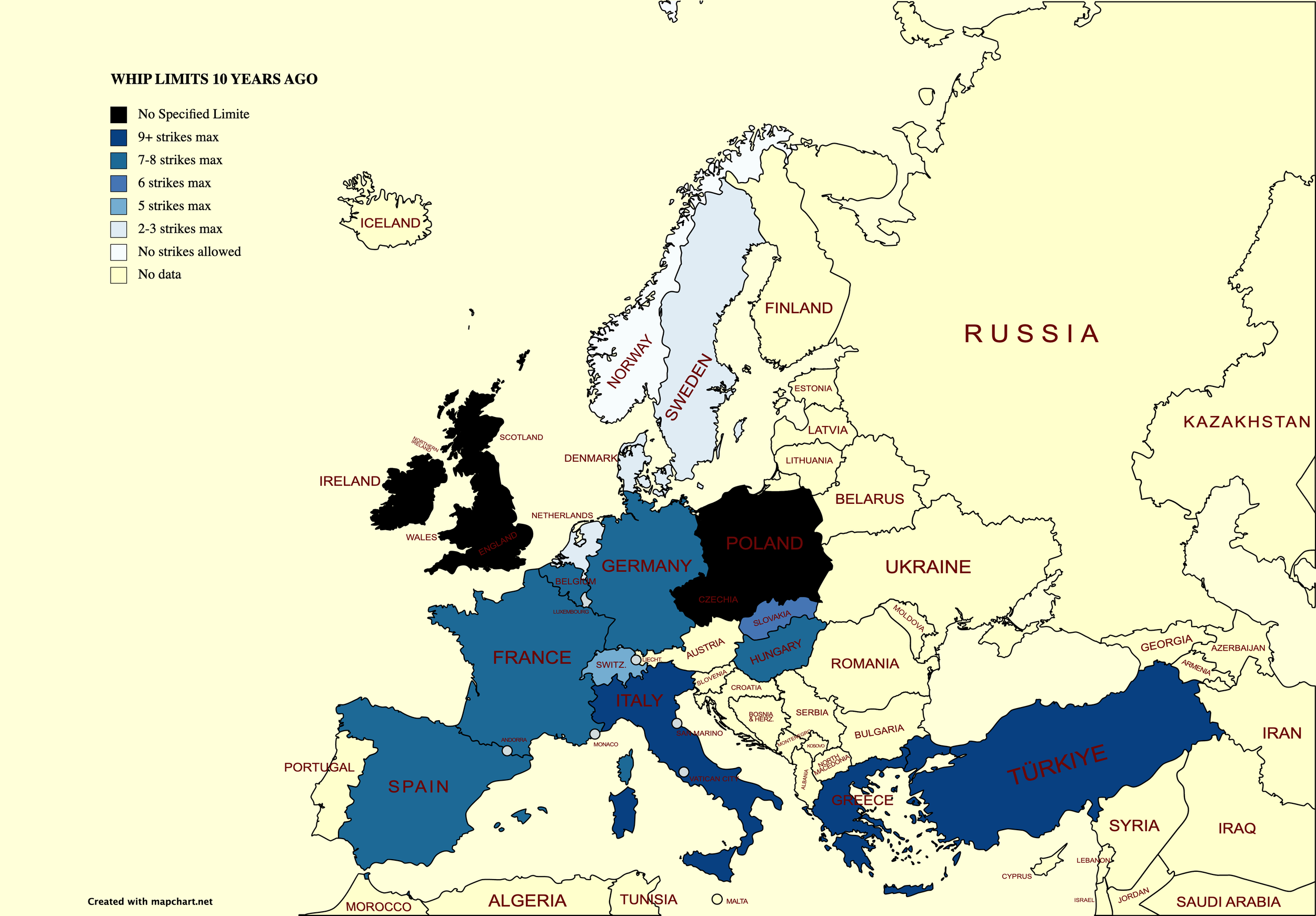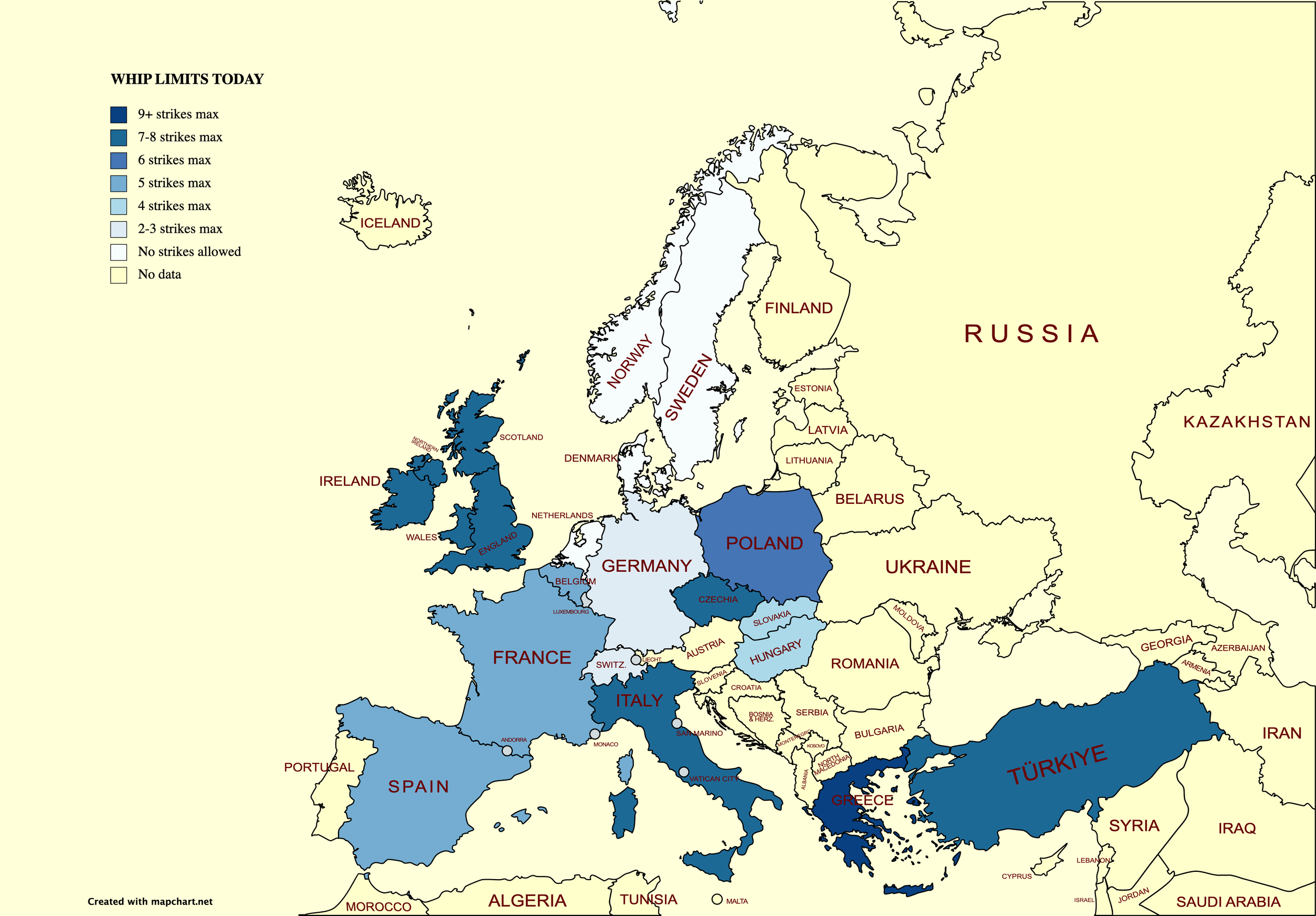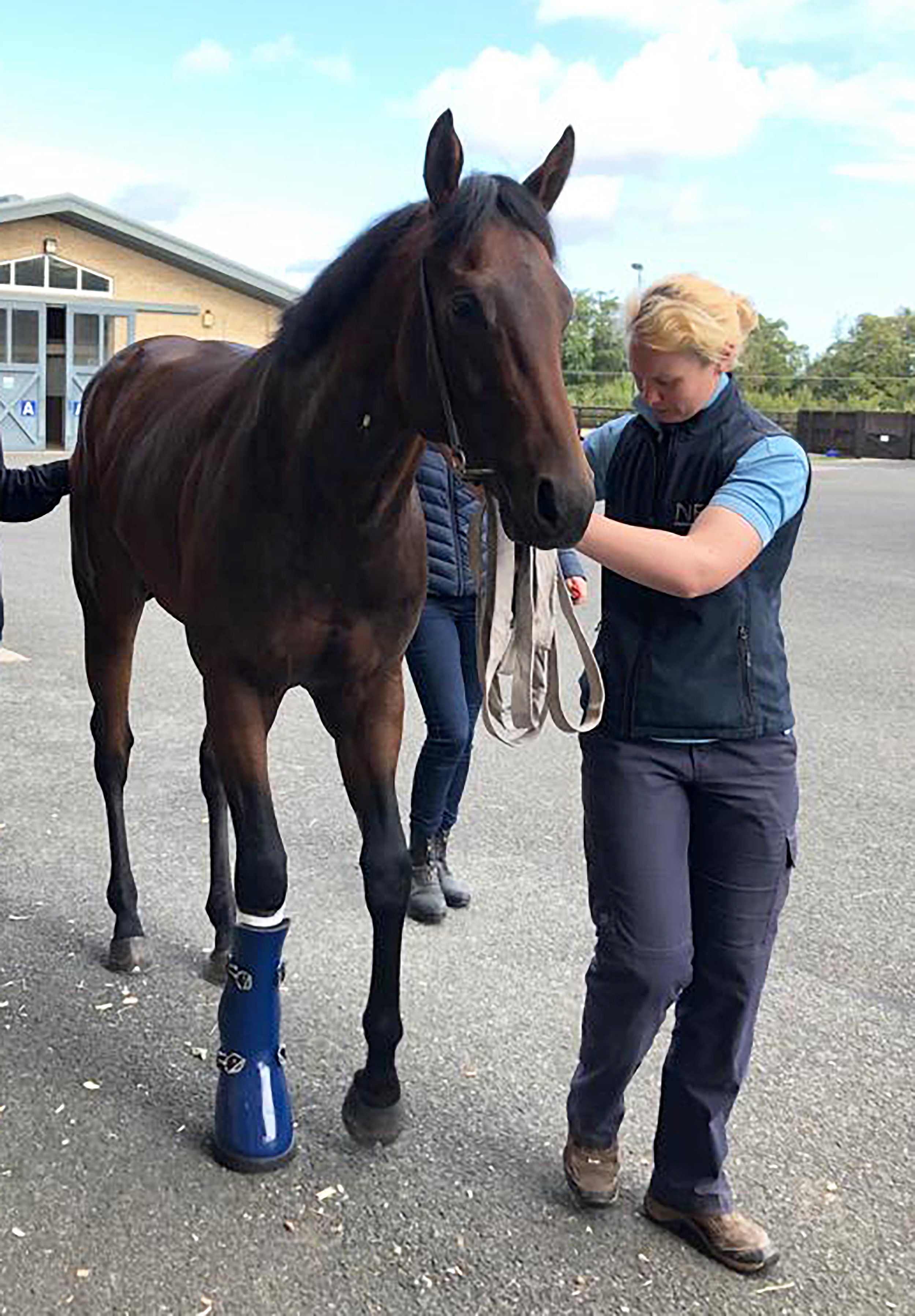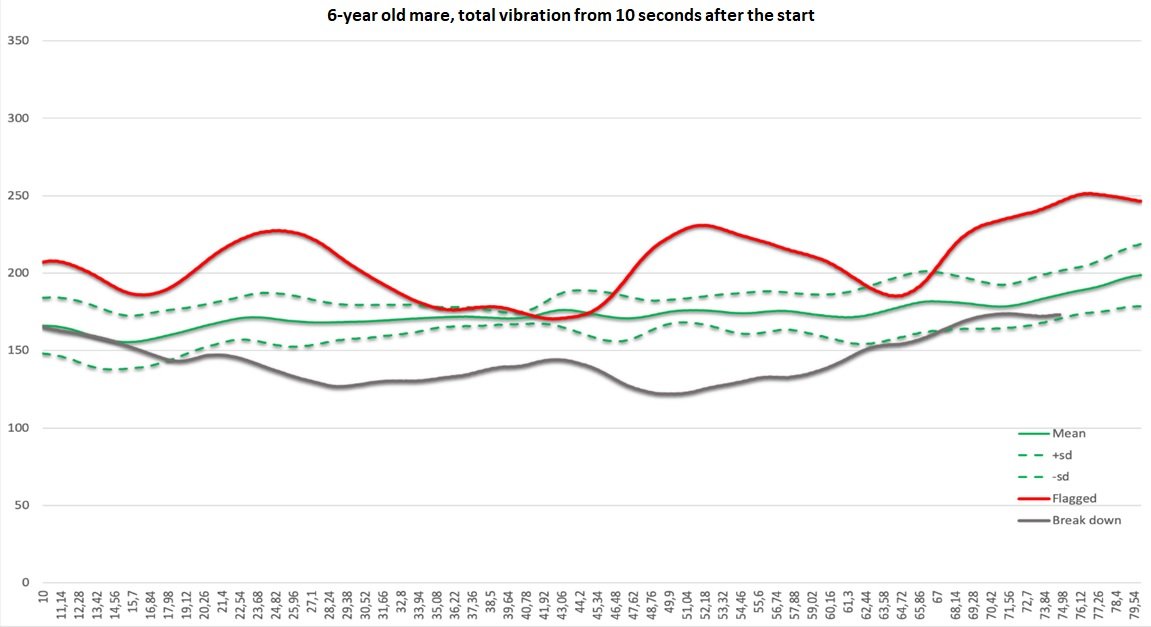How trainers promote best welfare practice across Europe
"Mens sana in corpore sano" - is a well known Italian phrase which translates to “a healthy mind in a healthy body" is a fundamental principle for every athlete, and racehorses are true athletes of the sporting arena. Just like their human counterparts, the performance of a racehorse depends not only on their physical condition but also on their mental well-being. The issue of animal welfare in horse racing is not just a matter of ethics or sensitivity, but the foundation upon which the integrity of the entire sport rests.
The concept of equine welfare extends beyond the mere absence of disease or injury. It concerns the quality of life of the horses, including their daily treatment, living conditions, access to open spaces, appropriate nutrition, and the ability to express natural behaviours. Moreover, it includes ethical training practices that respect the animal's physical limits, avoiding bad training and stress.
In the context of racing, equine welfare is scrutinised not only by industry insiders but also by the public and animal rights activists. Our focus in this section of the article is on the evolution of welfare practices in the leading countries of European horse racing: Great Britain, France, Ireland and Germany.
The goal is to understand not only the current state in terms of equine welfare but also to identify trends and areas for improvement, reflecting on the importance of an ethical and responsible approach to these extraordinary athletes.
GREAT BRITAIN - HORSE WELFARE BOARD (BHA)
The Horse Welfare Board, inclusive of representatives from the BHA, racecourses, and horsemen, unveiled a five-year welfare plan in 2020 to elevate horse welfare in British racing. This plan is dedicated to ensuring a "life well-lived" for racehorses, with a focus on traceability, safety, well-being, alongside initiating the industry's most extensive data project. It targets enhancing health care practices, ensuring lifelong responsibility, reducing injuries, and fostering public trust through transparency and ethical practices. Additionally, the strategy commits to developing a Code of Ethics and advancing veterinary care and injury prevention. Importantly, the implementation team is collaborating with the industry on 26 strategic projects, backed by funding from the Horserace Betting Levy Board (HBLB) since 2019 and a recent £3 million grant from the Racing Foundation, to realise these goals.
In the array of projects undertaken by the Welfare Board to bolster safety and uphold equine welfare standards, there are a few that stand out as being exceptionally cutting-edge, such as the: Thoroughbred Census, Equine Vision Project, Data Partnership.
Thoroughbred Census
The project aims to enhance the traceability of retired thoroughbreds, enabling better support for owners and the adaptation of welfare initiatives by British Racing and Retraining of Racehorses (RoR). It involves a six-month census, in partnership with RoR, collecting detailed information on retired racehorses to improve aftercare and respond quickly to equine disease outbreaks.
Equine Vision Project
“We try to look through the horses’ eyes” - Mike Etherington-Simth
In 2017, the BHA and Racing Foundation funded research into equine vision to enhance hurdle and fence safety. Horses, seeing fewer colours than humans, struggle to distinguish between hues like red, orange, and green. The study assessed the visibility of orange markers on racecourse obstacles against alternative colours, considering how weather conditions affect perception.
Data Partnership
This project seeks to enhance racehorse safety and welfare by analysing risks and factors leading to injuries and fatalities on racecourses and during training in Great Britain. It utilises extensive data on races and training practices, employing advanced statistical models to identify risk factors. The initiative, in collaboration with industry stakeholders, aims to provide evidence that informs decisions and measures to minimise risks, directly contributing to the betterment of racehorse welfare.
FRANCE - FRANCE GALOP
France Galop is deeply committed to promoting high standards of horse welfare, aligning with the 8 principles outlined in the "Charte Pour le Bien-Être Équin". This commitment is evidenced through various initiatives, including the inspection of facilities by France Galop veterinarians for new trainers who have acquired their flat racing licences. These checks, part of the certification process, aim to ensure that the infrastructure is suitable for housing horses. In 2021, a total of 410 training centres were inspected by the veterinarians of the Fédération Nationale des Courses Hippiques. The vets also check for prescribed medications and substances on site, adhering to a “zero tolerance” policy.
IRELAND - THOROUGHBRED WELFARE COUNCIL (HRI)
“They have horse welfare right at the forefront of everything they do and I would say they are doing a very good job” Joseph O’Brien
In 2021, the Irish Thoroughbred Welfare Council was assembled to act as an advisor to the Board of HRI and assist in devising policies on welfare matters. HRI gathered 60 industry participants in a co-design project to create a manual called “Our Industry, Our Standards,” aiming to establish a system where welfare standards are verified and measured. These standards include good feeding, good housing, good health and good well-being. Additionally, the Thoroughbred Council is collaborating with IHRB, Weatherby’s, and the Department of Agriculture to create a traceability system that will ensure every horse always has a known link to the responsible person.
Best-Turned-Out League
To promote and encourage the implementation of good animal care and welfare practices, HRI has introduced the “Best-Turned-Out League,” which aggregates these prizes from across the country into a league table with substantial prizes from six different categories, highlighting the impressive standards maintained across the industry. The primary caregivers, who are often lifelong careerists, are our industry employees.
GERMANY - DEUTSCHER GALOPP
Deutscher Galopp, has notably advanced equine welfare within racing in recent years. Not only has it raised the quality standards of horse care within stables, monitored through surprise veterinary checks, but it has also started to develop an intriguing project that monitors the physical development of racehorses.
Physical Maturity Check for 2-Year-Olds Before Training
Deutscher Galopp has implemented regulations requiring that every horse must pass specific veterinary checks. These checks are designed to ascertain sufficient physical maturity before a horse enters into training. A second assessment is conducted shortly before the horse can start in a race, to confirm its physical fitness for competition.
For this section of the article, we canvassed opinion from a selection of industry professionals for their perspectives on issues related to equine welfare.
Q: What role does horse welfare play in your training practices and what specific measures do you implement to safeguard the physical and mental well-being of the horses?
"The welfare of my horses is central to me; it is the most crucial element for the success of my business” asserts Seamus Mullins, a sentiment unanimously echoed by all interviewees who have long regarded animal welfare as a key factor from the outset of their careers in the racing sector. When delving into the practicalities of ensuring each horse's welfare is honoured, Joseph O'Brien highlights the significance of tailoring care to individual needs. "It's crucial not to generalise, as what satisfies one horse might not suit another," he explains. This underlines the necessity of adapting training and rest schedules to cater to their unique preferences and inclinations, guaranteeing their well-being and happiness.
Luca Cumani, who since retiring from training has remained active within the industry, including a term as a director of the BHA and as a pre-eminent breeder emphasises the importance of observation to understand each horse's psychological capabilities and preferences.
Seamus Mullins discusses the regular turnout of horses in individual paddocks while ensuring they are always in association with other horses. The stables are varied to suit different preferences, emphasising the need for regular updates to training methods and facilities to keep the horses in the best condition possible.
Peter Schiergen, Nastasja Volz-Degel, and Alessandro Botti all share this commitment to horse welfare, implementing daily routines, wellness programs, and training methods tailored to the individual needs and physical aptitudes of each horse. They focus on creating a comfortable environment for the horses, using modern facilities such as solariums, water treadmills, and magnetic blankets for massage, highlighting a collective effort to maintain high welfare standards in the racing industry.
Q: How do you educate your staff or team members about the importance of animal welfare?
"I always said to the riders: the relationship with the horse you ride should be viewed as a partnership, akin to that with your wife or daughter, and should be treated with the same respect and care" Cumani explains with a touch of warmth. The stable staff plays a pivotal role in the implementation of animal welfare, which is why, as the interviewees emphasise, it's crucial to focus on their education and enhance their knowledge to the fullest. "We want our staff to become better horsemen," states Schiergen.
Beyond the training provided internally within their stables, some trainers, like Alessandro Botti, with the support of AFASEC (the Association de Formation et d'Action Sociale des Ecuries de Courses - which roughly translates to Association for Training and Social Action of Racing Stables), have decided to offer courses in equine ethology led by experts brought in from outside. This initiative not only sparked significant interest among their staff but also led to an improved approach to working with horses.
Q: The risk of injuries is an inherent component in all sports, including horse racing. What is your opinion on this statement, and what specific actions do you take to minimise the risks?
"Risks are everywhere, especially in competitive activities, whether involving humans or animals, there's a significant element of risk," are the words of Cumani, which also resonated with others we interviewed.
The consensus is that, unfortunately, injuries are inevitable despite efforts to minimise them through practices and care that respect the physical state of the horse. "We try to minimise the risks by checking every horse before a race and during training, we never push the limit of a horse if he isn't ready enough” underlines Schiergen, “we have to get the message across that we are doing all our best to minimise the risks at all accounts”, adds Mullins.
Q: What role do you believe transparency plays in communicating to the public the importance placed on the welfare of racing horses in daily activities, and how do you ensure that this information is effectively shared with the general public?
“There are fewer and fewer people growing up with animals and in farming, and as a result, this is why we need to show through platforms what we do because things we take for granted, someone who has never been to a racing yard may not realise what happens,” says O'Brien. He adds, “It is important to give people access to behind the scenes, and this is why we try to be quite active on social media and encourage people to come to our yard, so that they realise the amount of passion that staff puts in their daily work.”
Public involvement, to make them part of the daily practices of stable life, is crucial, as our interviewees from various parts of Europe maintain. Thanks to numerous activities promoted by the racing authorities of the interviewees' respective countries, Open Day events allow the public to participate in stable life.
Many trainers, like Seamus Mullins, have noticed a significant increase in participation in recent years, “Ten years ago, participation in the UK was about 100, while in 2023 it was more than 500. Moreover, people who participate often express surprise at how well race horses are treated.” However, all the trainers, like Alessandro Botti affirms, it is necessary to increase content on social media, to give the possibility to everyone, every day and in every part of the world, to participate in the daily life of horses in various stables.
Q: What do you think will be the future trends in horse welfare in Racing in the coming years?
All the trainers interviewed are convinced that the standards of equine welfare in racing are already very high. However, they unanimously believe that social pressure from activists will continue to grow, making it necessary to increase transparency and public engagement. Joseph O'Brien emphasised the importance of education: "What I think really has to be put to the forefront is educating people who are not involved in racing; this will be the biggest challenge."
Given the insights on how Racing Authorities operate in terms of Horse Welfare and the daily interest and commitment of trainers, the trend seems to be very positive and reflects very high standards. It is essential, however, that countries collaborate with each other to inspire one another, further improving equine welfare practices, as Helena Flynn, the British Horse Welfare Board Programme Director emphasises "We love these animals and do our best to ensure they are protected, and thus it would be beneficial if the results of various state projects could contribute to inspiring everyone internationally." Therefore, the issue of equine welfare in racing is a complex mosaic of care, respect, and dedication towards the thoroughbred racehorse. Recognising and acting for their welfare is not just a moral duty but the foundation on which to build a fair, sustainable, and most importantly, animal-respectful racing industry.
What is racing's "Social Licence" and what does this mean?
Paull Khan expands upon a presentation he gave at the
European Parliament to the MEP’s Horse Group on November 30th
As World Horse Welfare recently pointed out in its excellent review of the subject—while social licence or the ongoing acceptance or approval of society may be ‘intangible, implicit and somewhat fluid’—an industry or activity loses this precious conferment at its peril. Examples, all too close to home, can be seen in greyhound racing in Australia and America or jumps racing in Australia.
What is clear is that our industry is acutely aware of the issue – as are our sister disciplines. The forthcoming Asian Racing Conference in Melbourne in February will feature a session examining what is being done to ‘ensure that (our) a sport is meeting society’s rapidly evolving expectations around welfare and integrity’. And back in November, the Federation Equestre Internationale (FEI) held a General Assembly whose ‘overriding theme’ was ‘that of social licence, and the importance for all stakeholders to understand the pressing needs for our sport to adapt and monitor the opinions of those around us’.
Considered at that meeting were results of a survey, which indicated that two-thirds of the public do not believe horses enjoy being used in sport and have concerns about their use. Those concerns mainly revolve around the welfare and safety of the horses. Intriguingly, a parallel survey of those with an active involvement in equestrian sport revealed that as many as half of this group even did not believe horses enjoyed their sport; and an even higher proportion than the general public—three-quarters—had concerns about their use.
While it is likely true, to an extent at least, that the public tends not to distinguish between equestrian sports, the specific concerns about horse racing are certainly different from those about Olympic equestrian disciplines, which centre on such matters as bits, bridles, spurs and nosebands.
Upon what, then, does our social licence in European horse racing critically depend? What are the major issues about which the public has opinions or worries, and on which the continuance of our social licence may hang? It should be said at the outset that what follows is not based upon scientific evidence (and the research should certainly be undertaken) but merely reflects the belief of the author. But it is suggested with some confidence that the following (in no particular order) are the three issues uppermost in public consciousness. They are:
Use of the whip
Racecourse injuries/fatalities
Aftercare – the fate of retired racehorses
There are, of course, other matters – the misuse of drugs and medications, gambling harms, etc., but the three topics above seem to account for a large proportion of the public’s anxieties about racing. There are likely to be subtle differences in the views of the public between one European country and another. Certainly, it is true that the volume of public disquiet varies very considerably between nations. In Scandinavia and Great Britain, for example, horse welfare and animal welfare more generally are very much front of mind and near the centre of public discourse. It is far less evident in several other countries.
But it is illuminating to look at what racing has been doing in recent years in the three areas listed above, and what the future looks like. A survey was conducted among member countries of the European and Mediterranean Horseracing Federation (EMHF); and it is clear that, while there is much still to be done, there has been significant and sustained progress and good reason to believe that this is likely to continue – and in fact accelerate – over the next few years.
Use of the whip
Let us consider whip use first. At the most recent World Horse Welfare Annual Conference in London in November, straplined ‘When Does Use Become Abuse’, one speaker was called upon to give strategic advice as to how to counter negative perceptions of equestrianism.
What he decided to major on was striking. With the whole breadth of the equine sector from which to draw, he chose to hone in on horseracing and—more specifically yet—on the issue of whip use. It was a salutary further example of how, while the whip may be a tiresome distraction to many, it is front and centre in the minds of many of the public.
Is there any more emotive or divisive issue within racing than the whip? Admittedly, most racing professionals hold that it really is very difficult to hurt a horse with the mandated padded crops, even if one wanted to. And, with veterinary supervision at all tracks, it is impossible to get away with, even if one did. In brief, they don’t consider this a welfare issue, but rather one of public perception.
But it is then that the divisions set in. Some conclude that all that is necessary to do has been done, and that any further restriction on the whip’s use would constitute pandering to an ignorant public. Others argue that, even if it is just a matter of public perception and the horses are not being hurt or abused, the sight of an animal being struck by a human is now anathema to increasingly broad swathes of society—in a similar way to the sight of a child being struck by an adult: a commonplace 50 years ago, but rare today. Therefore, the sport must act to be ahead of the curve of public sentiment in order to preserve its social licence.
How is this argument playing out? Let us look at a key element of the Rules of Racing in 18 European racing nations—the maximum number of strikes allowed in a race is a blunt measure, indeed, and one that takes no account of other variables such as the penalty regime for transgressions, but one that, nonetheless, paints a telling picture.
The first map shows how things stood 20 years ago. The majority of the countries are shown in black, denoting that there was no specified limit to the number of strikes. Just one appears in white – Norway banned the use of the whip as long ago as 1986.
The second paints the picture as it was 10 years ago. Eleven of the 18 countries had, in the intervening decade, changed their rules and applied a lower maximum number of strikes, and are shown in a lighter colour as a result.
Today’s situation is shown in the third map. All but one of the countries (excluding Norway) have tightened up their whip use rules still further over the past decade. None now allows unlimited use, and countries now banning the use of the whip for encouragement, number four.
It can be concluded that all countries across Europe are moving towards more restricted use of the whip. At different speeds and from different starting points, the direction of travel is common.
What will the situation be in another 10 years? Many administrators within EMHF countries, when asked to speculate on this, gave the view that there would be no whip tolerance within ten years and that the Scandinavian approach will have been adopted.
On the other hand, Britain has recently concluded that the biggest public consultation on the subject and the new rules that are being introduced do not include a reduction in the number of strikes, but rather a series of other measures, including the possible disqualification of the horse and importantly, the requirement only to use the whip in the less visually offensive backhand position.
Whether or not we will see a total ban within the next decade, it must be long odds-on that restrictions on whip use, across the continent, will be stricter again than they are today.
Aftercare
Twenty years ago, little thought was given to the subject of aftercare. There were some honourable exceptions: in Greece, the Jockey Club required its owners to declare if they could no longer provide for their horse, in which case it was placed in the care of an Animal Welfare organisation. Portugal had a similar reference in its Code. Most tellingly, in Britain a trail-blazing charity, Retraining of Racehorses (RoR), had been launched, following a review by the former British Horseracing Board.
Ten years ago, RoR had nearly 10,000 horses registered, had developed a national programme of competitions and events in other equestrian disciplines, and was holding parades at race-meeting to showcase the abilities of former racehorses to enter new careers.
Di Arbuthnot, RoR’s chief executive, explains, “In the UK, a programme of activities for thoroughbreds had started to encourage more owner/riders to take on former racehorses. This was supported by regional volunteers arranging educational help with workshops, clinics and camps to help the retraining process. Other countries were looking at this to see if similar ideas would work in Europe and beyond.
“Racing’s regulators had begun to think that this was an area they should be looking to help; retraining operators and charities that specialised in thoroughbreds were becoming recognised and supported; and classes at equestrian events began in some countries. Owner/riders were looking to take on a thoroughbred in place of other breeds to compete or as a pleasure horse; the popularity of the thoroughbred was growing, not just by professional riders to use in equestrian disciplines, but also by amateurs to take on, care for and enjoy the many attributes of former racehorses.
“The aftercare of the thoroughbred was on the move.”
But not a great deal else was different in the European aftercare landscape.
Since then, however, there has been little short of an explosion of aftercare initiatives. In 2016, the International Forum for the Aftercare of Racehorses (IFAR) was born, “to advocate for the lifetime care of retired racehorses, to increase awareness within the international racing community of this important responsibility.” In this endeavour, IFAR is not in any way facing resistance from Racing Authorities – far from it. It is pushing against an open door.
The International Federation of Horseracing Authorities has, as one of its twelve objectives, the promotion of aftercare standards. And the chair of its Welfare Committee, Jamie Stier, said some years ago that there is ‘now a better understanding and greater recognition that our shared responsibility for the welfare of racehorses extends beyond their career on the racetrack’.
This direction from the top has been picked up and is increasingly being put into active practice. Also in 2016, France launched its own official charity Au Dela des Pistes, (‘beyond the racetrack’), in 2020 Ireland followed suit with Treo Eile (‘another direction’). By 2019, in Britain, remarkably, many more thoroughbreds were taking part in dressage than running in steeplechases!
So now the three main thoroughbred racing nations in Europe all have active and established aftercare programmes; and many other smaller racing nations are moving in that direction. It is not just a matter of repurposing in other equestrian pursuits – many of those horses retiring from racing that are not suited to competitive second careers are simply re-homed in retirement and others find profitable work in areas such as Equine Assisted Therapy.
Arbuthnot (also chair of IFAR) adds: “For racing to continue as we know it, we must assure the general public, those that enjoy racing, that thoroughbreds are not discarded when their racing days are over and that they are looked after and have the chance of a second career. It is up to all of us around the world to show that we care what happens to these horses wherever their racing days end and show respect to the thoroughbred that has given us enjoyment during their racing career, whether successful or not on the racecourse. If we do this, we help ensure that horse racing continues in our lifetime and beyond.”
It is important to publicise and promote the aftercare agenda, and the EMHF gives IFAR a standing platform at its General Assembly meetings. EMHF members have translated the IFAR ‘Tool Kit’—for Racing Authorities keen to adopt best practice—into several different European languages.
Time Down Under and Justine Armstrong-Small: Time Down Under failed to beat a single horse in three starts but following his retirement from racing, he has reinvented himself, including winning the prestigious showing title of Tattersalls Elite Champion at Hickstead in June 2022. Images courtesy of Hannah Cole Photography.
British racing recently established an independently chaired Horse Welfare Board. In 2020, the Board published its strategy ‘A Life Well Lived’, whose recommendations included collective lifetime responsibility for the horse, incorporating traceability across the lifetimes of horses bred for racing.
Traceability will be key to future progress, and initiatives such as the electronic equine passport, which has been deployed among all thoroughbreds in Ireland and Britain, will play a vital part. Thoroughbred Stud Book birth records are impeccable, and we know the exact number of foals registered throughout this continent and beyond. The aim must be to establish the systems that enable us to ascertain, and then quantify the fate of each, at the least until their first port of call after retirement from racing.
Racecourse injuries
There can be nothing more distressing – for racing professionals and casual observers alike – than to see a horse break down. The importance of minimising racecourse injuries—and, worse still, fatalities—is something everyone agrees upon. What is changing, though, it would appear, is the potential for scientific advances to have a significant beneficial effect.
Of course, accidents can and do befall horses anywhere and they can never be eliminated entirely from sport. But doing what we can to mitigate risk is our ethical duty, and effectively publicising what we have done and continue to do may be a requirement for our continued social licence.
There is much that can be said. It is possible to point to a large number of measures that have been taken over recent years, with these amongst them:
Better watering and abandonment of jump racing if ground is hard
Cessation of jump racing on all-weather tracks
Cessation of jump racing on the snow
Safer design, construction and siting of obstacles
By-passing of obstacles in low sunlight
Colouring of obstacles in line with equine sight (orange to white)
Heightened scrutiny of inappropriate use of analgesics
Increased prevalence of pre-race veterinary examinations, with withdrawal of horses if necessary
The outlawing of pin-firing, chemical castration, blistering and blood-letting
Abandonment of racing in extreme hot weather
Many of the above relate to jump racing, and Britain has witnessed a reduction of 20% in jump fatality rates over the past 20 years. But there is more that must be done, and a lot of work is indeed being done in this space around the world.
One of the most exciting recent developments is the design and deployment of ground-breaking fracture support kits which were distributed early in 2022 to every racecourse in Britain.
Compression boots suitable for all forelimb fractures
By common consent, they represent a big step forward – they are foam-lined and made of a rigid glass reinforced plastic shell; they’re easily and securely applied, adjustable for varying sizes of hoof, etc. They reduce pain and anxiety, restrict movement which could do further damage, and allow the horse to be transported by horse ambulance to veterinary facilities.
X-rays can then be taken through these boots, allowing diagnosis and appropriate treatment. These kits have proved their worth already: they were used on 14 occasions between April and December last year, and it would appear that no fewer than four of these horses have not only recovered but are in fine shape to continue their careers. It is easy to envisage these or similar aids being ubiquitous across European racetracks in the near future.
Modular splints suitable for slab fractures of carpal bones
Perhaps of greatest interest and promise are those developments which are predictive in nature, and which seek to identify the propensity for future problems in horses.
Around the world, there are advances in diagnostic testing available to racecourse vets. PET scanners, bone scanners, MRI scanners and CT scanners are available at several tracks In America, genetic testing for sudden death is taking place, as is work to detect horses likely to develop arrhythmias of the heart.
Then there are systems that are minutely examining the stride patterns of horses while galloping to detect abnormalities or deviations from the norm. In America, a great deal of money and time is being spent developing a camera-based system and, in parallel, an Australian-US partnership is using the biometric signal analysis that is widely used in other sports.
The company – StrideSAFE – is a partnership between Australian company StrideMASTER and US company Equine Analysis. They make the point that, while pre-race examinations that involve a vet trotting a horse up and down and looking for signs of lameness, can play a useful role, many issues only become apparent at the gallop.
There are, in any case, limitations to what is discernible to the naked eye, which works at only 60 hertz. StrideMASTER’s three-ounce movement sensors, which fit into the saddlecloth, work at 2,400 hertz, measuring movements in three dimensions – forward and backward, up and down and side to side, and building up a picture of each horse’s ‘stride fingerprint’.
In a blind trial, involving thousands of horses, 27 of which had suffered an injury, this system had generated a warning ‘red-flag’ for no fewer than 25 of them. The green lines in the centre of this diagram are this horse’s normal stride fingerprint; the red line was the deviant pattern that would have flagged up the potential problem, and the grey line was where the horse then sadly injured itself.
The ‘stride fingerprint’ of a racehorse
While the false-positive rate is impressive for such screening tools, another enemy of all predictive technologies is the false positive, and ways need to be found to take action on the findings without imposing potentially unnecessary restrictions on horses’ participation. At present, the StrideMASTER system is typically throwing up three or four red flags for runners at an Australian meeting—more in America.
A study in the spring by the Kentucky Equine Drug Research Council, centering on Churchill Downs, will seek to hone in on true red flags and to develop a protocol for subsequent action. David Hawke, StrideMaster managing director, expands, “Protocols will likely vary from jurisdiction to jurisdiction, depending on the imaging modalities available. At Churchill Downs, they will have a PET scan, and we will be going straight from red-flag to PET scan.”
There will be other approaches available to regulators involving, for example, discussion with the trainer, a requirement for a clean vet’s certificate, or perhaps for a normal ‘fingerprint’, before racing next.
CONCLUSIONS
There is a need for continued investment and resource allocation by Racing Authorities. But the will would seem to be there. In Britain, €7M from betting will, over the next three years, fund an extensive array of no fewer than 26 horse welfare projects, covering such matters as education and support for re-homers, analysis of medication data and clinical records, fatalities occurring off the track, ground/going research and obstacle improvement and development. That is a serious statement of intent and an illustration of just how high in importance the welfare of racehorses has now become.
Of course, not all racing nations have the resources to conduct such research. It will be vital, therefore, that the lessons learnt are shared throughout the racing world. In Europe, this is where the EMHF will play a vital role. The federation has always had, as primary aims, education and the adoption of best practice across its membership.
The hope must be that, through all these measures and many others in combination, we can assuage the concerns of the public sufficiently to retain our social licence. But let our ambitions not rest there. We must also strive to shift the debate, to move onto the front foot and invite a focus on the many positive aspects of racing, as an example of the partnership between man and horse that brings rich benefit to both parties.
Elsewhere in this issue, there is a feature on racing in Turkey, and it was the founding father of that country, Kemal Ataturk, who famously said:
“Horseracing is a social need for modern societies.”
We should reinforce at every opportunity the fact that racing provides colour, excitement, entertainment, tax revenues, rural employment, a sense of historical and cultural identity and much more to the human participants. It is also the very purpose of a thoroughbred’s life and rewards it with ‘a life well lived.’
We have a lot more to do, but let’s hope we can turn the tide of public opinion such that people increasingly look at life as did Ataturk.



